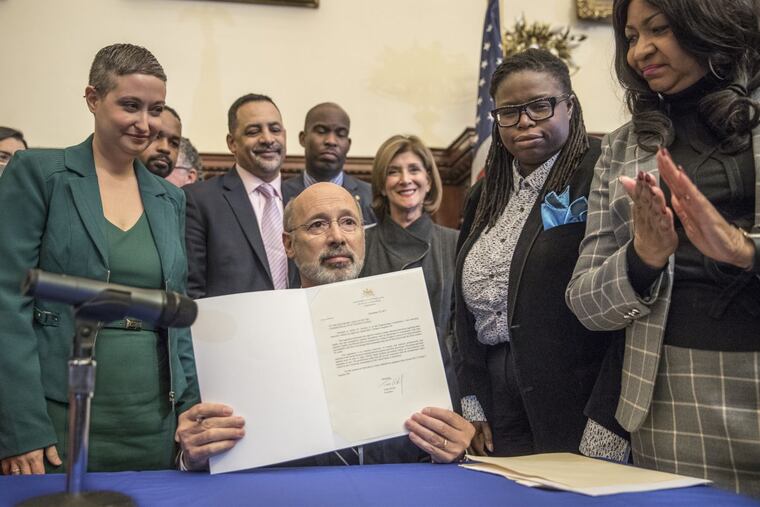In battles over abortion rights, choice matters most in the voting booth | Editorial
The path to protecting reproductive rights and women’s health in Pennsylvania goes through the ballot box.

State legislatures all over the country are testing the limits of Roe v. Wade — the landmark 1973 Supreme Court decision that prevents states from banning abortion. Emboldened by the new conservative majority on the Supreme Court, Republican-controlled states have been passing and signing into law abortion bans — most notably, Alabama’s new law that make conducting an abortion a crime punished by 99 years of imprisonment unless the woman’s life is at risk.
In most cases, courts blocked extreme laws from taking effect. That is exactly the goal of the legislation: giving the Supreme Court a case that would allow it to overturn or dramatically weaken Roe v. Wade.
In Pennsylvania, with a Republican-controlled General Assembly and a Democrat governor, those who want to ban abortion had to take an approach that is more limited in scope.
Earlier this month, the state’s House of Representatives passed a bill banning abortion based on Down syndrome. The bill is now in the state Senate. A similar bill passed during the last session of the General Assembly. Then it never got a vote in the Senate and Gov. Tom Wolf indicated that he would veto the bill were it to pass. In 2017, Wolf vetoed a 20-week abortion ban. The only thing protecting a woman’s right to choose in Pennsylvania is Gov. Wolf’s pen.
All of these battles provide a critical reminder of the importance of state-level elections.
The path to ensuring reproductive rights and women’s health in Pennsylvania goes through the ballot box. A pro-choice majority in one or both chambers of the General Assembly would likely be the only thing standing in the way of major limitations on abortion, and maybe a complete ban, especially if something dramatic happens like the Supreme Court overturning Roe v. Wade.
Unfortunately, voters don’t get a real choice in state elections. In 2018, all 203 House seats were up for grabs and so were 25 Senate seats — half of all seats in the chamber. But in the May primary, between 80 and 90 percent of voters saw either a single candidate or no candidate from their party for Senate and or House on the ballot. In the November general election, close to 40 percent of House seats and 25 percent of the Senate had only one candidate from the two major parties on the ballot.
Conversations about engagement in politics often focus on voter turnout. But when candidate turnout is so low, we shouldn’t expect much from voters. Running for office is a major sacrifice — personal, financial, professional — but the more people who rise to the occasion and decide to run, the more likely voters in the Commonwealth are to get the representation that they want.
A recurring takeaway from first-time candidates in the recent Philadelphia primary was that starting campaigning early is one of the best advantages a candidate can have. The 2020 primary is less than a year away, but it is not too late to think about running.
The best way to insure a woman’s right to choose is to make sure voters have a choice in the voting booth.